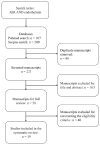The Role of Aryl Hydrocarbon Receptor in the Endothelium: A Systematic Review
- PMID: 37686342
- PMCID: PMC10488274
- DOI: 10.3390/ijms241713537
The Role of Aryl Hydrocarbon Receptor in the Endothelium: A Systematic Review
Abstract
Activation of the aryl hydrocarbon receptor (AhR) has been shown to be important in physiological processes other than detoxification, including vascular homeostasis. Although AhR is highly expressed in the endothelium, its function has been poorly studied. This systematic review aims to summarise current knowledge on the AhR role in the endothelium and its cardiovascular implications. We focus on endogenous AhR agonists, such as some uremic toxins and other agonists unrelated to environmental pollutants, as well as studies using AhR knockout models. We conclude that AhR activation leads to vascular oxidative stress and endothelial dysfunction and that blocking AhR signalling could provide a new target for the treatment of vascular disorders such as cardiovascular complications in patients with chronic kidney disease or pulmonary arterial hypertension.
Keywords: AhR; aorta; cardiovascular system; endothelial function; endothelium; vascular homeostasis.
Conflict of interest statement
The authors declare no conflict of interest.
Figures


References
Publication types
MeSH terms
Substances
LinkOut - more resources
Full Text Sources
Medical

